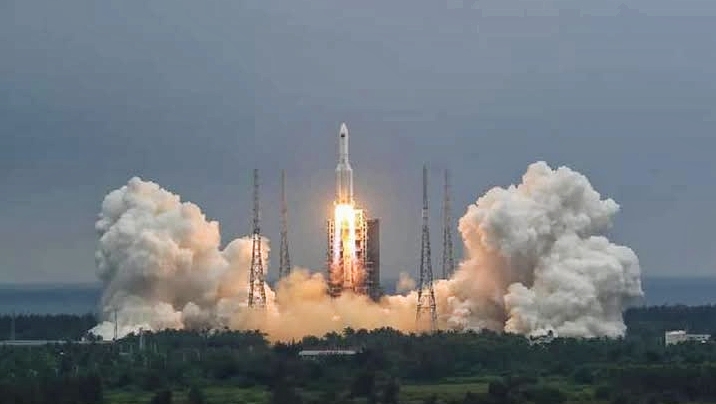China’s Stealthy “Space Net Gun” Raises Dual-Use Concerns: Debris Cleaner or Covert Anti-Satellite Weapon?
A team of Chinese aerospace engineers has developed a compact, recoil-dampened launcher capable of capturing space debris—a technological breakthrough with potentially significant military implications that could escalate the new space arms race.
How the Revolutionary Launcher Works
Detailed in Acta Aeronautica et Astronautica Sinica, the device represents a major leap in space-based capture technology:
🔹 Silent Operation
- Uses a closed-gas system that eliminates telltale smoke/flash
- Generates just 3.45mm barrel displacement (vs meters in traditional systems)
- Sealed design prevents space contamination
🔹 Innovative Recoil Control
- 35-degree “collapsing flower” ring absorbs 9%+ more energy than standard designs
- Weak mechanism breaks at preset pressure for precise projectile release
- Gunpowder-driven piston enables operation without external power
🔹 Debris Capture Mechanism
- Fires net-equipped capsules to ensnare orbital junk
- Guides captured debris toward atmospheric burn-up
Led by Nanjing University’s Prof. Yue Shuai (a space weapons specialist with two operational orbital payloads), the team emphasized civilian applications for tackling the 9,000+ tons of space debris threatening satellites.
The Military Elephant in the Room
While presented as a debris solution, defense analysts highlight alarming dual-use potential:
🛰️ Covert ASAT Capabilities
- Could disable satellites without visible attack signatures
- “Appears as natural failure” to observers (per SCMP source)
- Far stealthier than China’s 2007 missile ASAT test that created debris field
💸 Strategic Advantages
- 90% cheaper than electromagnetic alternatives
- No need for complex cooling/power systems
- Mass-producible in standard factories
Geopolitical Implications
This development comes amid intensifying space militarization:
- Legal Gray Zone: Outer Space Treaty prohibits WMDs but not kinetic weapons
- US-China Tensions: Both nations testing satellite-capture technologies
- New Space Race: At least 6 countries now developing orbital combat capabilities
A European Space Policy Institute analyst warned: “Plausibly deniable ASAT systems could destabilize deterrence. What looks like debris cleanup today might be space warfare prep tomorrow.”
What’s Next?
With Prof. Yue confirming more orbital payloads planned, the international community faces urgent questions:
- Should net-based capture systems face arms control restrictions?
- How to verify civilian vs military use of such technologies?
- Can new treaties keep pace with dual-use innovation?
As one Pentagon report recently noted: “The line between space maintenance and space dominance is becoming dangerously thin.” This Chinese breakthrough ensures that line will only blur further.

